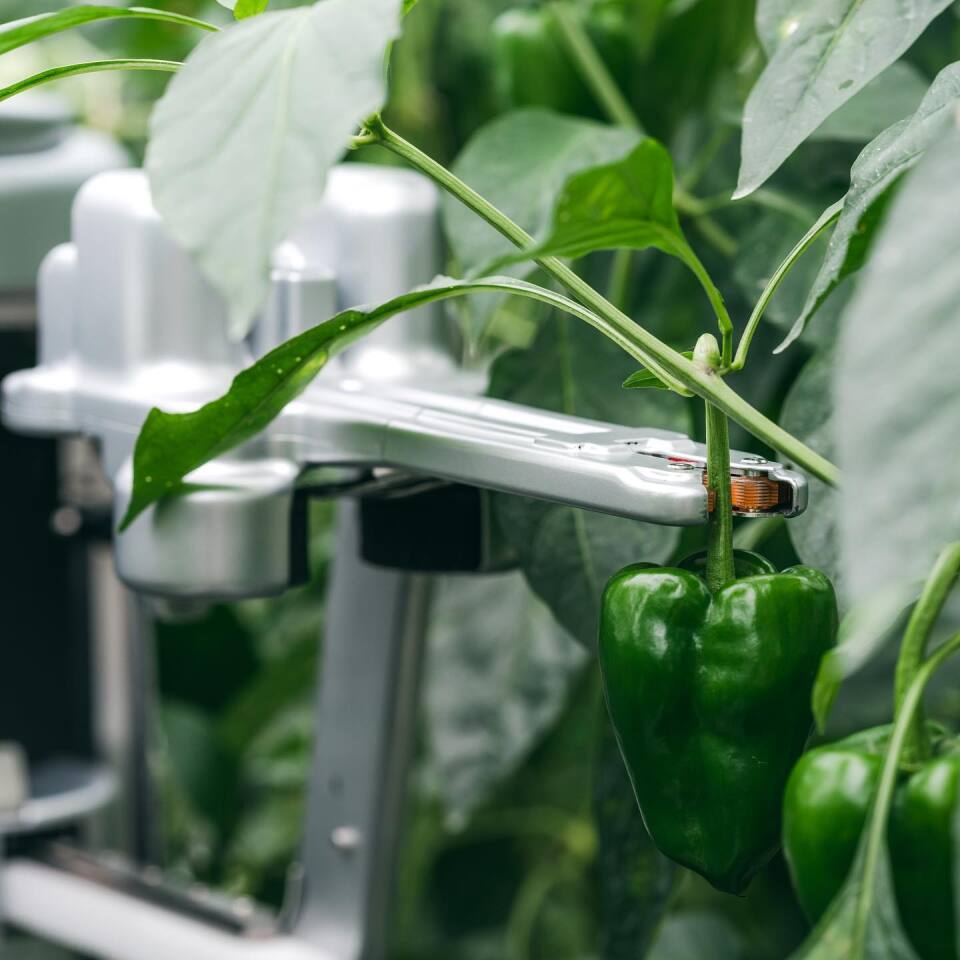According to Japanese robotics firm Agrist, there's a shortage of farm workers in that country, resulting in lower yields than would otherwise be possible. The company is offering a partial solution to the problem, though, in the form of a pepper-picking robot.
Known simply as L, the bot is the recipient of an Innovation Award at CES.
Instead of rolling on wheels or walking on legs, the robot moves along between rows of bell pepper plants on thick overhead wires, sort of like a horizontal gondola. As it performs its daily inspections of the crop, it uses multiple types of cameras – along with a proprietary AI-based computer vision algorithm – to spot ripe peppers in amongst the leaves.

When such a pepper is identified, L reaches in with its single arm and uses a specialized picking tool to grasp the pepper, slice through its stem, then drop it in an onboard storage compartment. In order to keep that compartment from overfilling, the robot regularly stops over top of a separate basket then slides open the bottom of the compartment, allowing the gathered peppers to fall into the basket for retrieval by human workers.
L is reportedly capable of working continuously for up to 12 hours a day, as long as there's daylight for it to see by. The robot is powered by two batteries, which can quickly be swapped for freshly charged ones when they start getting low.
According to Agrist, use of the technology should allow pepper farmers to increase their yields by about 20%. The company is currently offering a program wherein farmers pay approximately 1.5 million yen (around US$11,244) to have one of the robots installed at their farm, after which the company gets 10% of their total produce sales. Agrist is also planning on establishing farms of its own, that are specifically designed with the L in mind.
You can see the robot in all its pepper-picking glory, in the video below.
Source: Agrist






